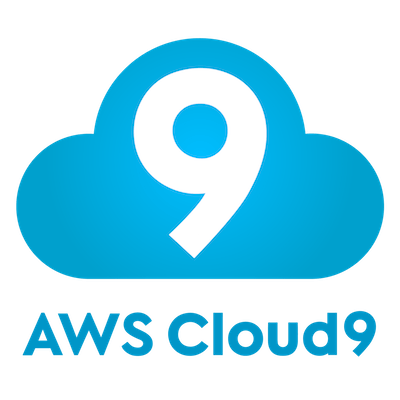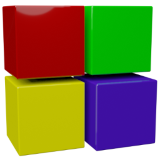Best IDE For Programming In The World | Why This is best IDE for Programming ?
The IDE (Integrated Development Environment) is a location where programmers may write code to construct their own apps. IDEs typically include debuggers and compilers, which make programmers' lives considerably simpler. It is a single piece of software in which all aspects of development are carried out. IDEs began with terminals and consoles, but as user demands changed, they evolved significantly. Nowadays, IDEs are far more sophisticated; they utilise machine learning to autocomplete our code and also make ideas when we get stuck or encounter problems.
So, here are some of the most popular and effective IDEs on the market right now:
#1 IntelliJ IDEA :
It is developed in Java and is one of the most user-friendly development environments available. Its primary goals are productivity and user experience. While you're coding, it makes pertinent suggestions. It contains built-in version control mechanisms and supports a wide range of languages. It offers clever code completion, which proposes class and method names as we type. It does not necessitate the usage of any third-party plugins. Many developer tools are easily supported by Intellij IDEA. However, one of the few drawbacks is that the performance of low-end devices is subpar.
#2 Visual Studio :
It is a Microsoft IDE that is used to create websites, web applications, and mobile apps. It has a broad range of capabilities, allowing it to create practically anything. It also supports C++ IntelliSense coding. It is compatible with both Windows and Mac and enables us to design programmes for any platform. It allows us to test apps and fix bugs while we're on the road. Visual Studio is a free programme. Visual Studio includes its own search engine, which allows you to look for Visual Studio features. Visual Studio's Team Foundation Server function is also quite useful, since it lets the user to create a checkpoint and roll back to a prior version. The issue with Visual Studio is that it is a large piece of software that takes a long time to load.
#3 Eclipse :
The Eclipse Foundation is in charge of its development. It works by providing a base workspace and an expandable plugin environment where we may download and alter the accessible workspace. It allows for debugging and profiling. It supports drag-and-drop and allows us to do static analysis on the code. If you are familiar with the Eclipse IDE, you may code in any well-known language such as Python, Java, or C++. This IDE is compatible with Windows, Linux, and macOS. Eclipse is completely free to use.
#4 PyCharm :
PyCharm is a Python-specific IDE created by JetBrains. It is most recognised for intelligent code completion, code inspections, on-the-fly mistake flagging, and extremely fast repairs. It assists us in writing clean, maintainable code. It also provides excellent support for frameworks like as Django, Flask, Google App Engine, and others. It connects with the IPython Notebook and allows us to use scientific libraries such as Numpy and Matplotlib. The PyCharm IDE is completely free to use. This IDE is compatible with Windows, macOS, and Linux operating systems.
#5 Atom :
Atom is most commonly used in web development. It is created by GitHub. Chris Wanstrath, the creator of GitHub, invented Atom. It is completely free and open source. It is cross-platform, including versions for Windows, Linux, and macOS. It is very customisable and has a plethora of helpful plugins. Atom's key benefit is that it has an appealing UI and nice color-coded syntax. The downside is that it has a long startup time.
#6 Arduino IDE :
Arduino is an IDE built in C and C++. It is mostly used to upload code to Arduino devices. It is compatible with nearly all microcontroller development boards on the market today. Because the code in Arduino is stored in the cloud, we can access it from anywhere. Because the majority of the device's libraries are written in C++, the Arduino IDE accepts C and C++ languages. However, because the majority of the underlying architecture of the Arduino is not object-oriented, it employs both C and C++.
#7 NetBeans :
Apache Software Foundation and Oracle collaborated to create NetBeans. It is a Java development environment. It enables the development of applications from components known as modules. Because it is controlled by the same business that owns Java, support for Java developers would be wonderful. It is also the official IDE for Java 8. It enables users to create desktop, mobile, and online apps. The autocomplete tool in NetBeans is really handy, and starting the server application is quite straightforward in NetBeans, however it takes a long time to start.
#8 AWS Cloud9 :
It is created by Amazon. It is a web-based IDE. AWS Cloud9 supports a variety of programming languages, including C, C++, Python, JavaScript, and others. It is quite simple to connect to AWS Cloud9 and collaborate. It enables us to execute the development environment on a controlled Amazon EC2 instance or other accessible Linux servers. In AWS Cloud9, we can also replicate the terminal with Linux commands, allowing several developers to work on the same project at the same time. The drawback is that selecting an instance for a project is complicated.
#9 Code::Blocks :
The Code::Blocks team created it. C++ is used to write Code::Blocks. It is free and open-source software. Many compilers, including GCC and Visual C++, are supported by Code::Blocks. It is very expandable and customizable. It is one of the top C and C++ IDEs. Code::Blocks' GNU GCC compiler is extremely fast and scalable. For newcomers, Code::Blocks is relatively simple to use. Code::Blocks provides greater flexibility, and it works well as an open-source IDE. The downside of Code::Blocks is that the design appears to be a little boring.
#10 Jupyter Notebook :
Jupyter Notebook is an open-source web-based programme, not a full-fledged IDE. It's popular in data science, scientific computing, and machine learning. It is commonly used with Python, but it also supports other languages. It is also utilised for presentations and educational purposes. It also supports markdown, allowing us to integrate HTML components, audio, video, and so on. Fernando Perez and Brian Granger founded it.




Post a Comment
Ask any Doubt related to this site...